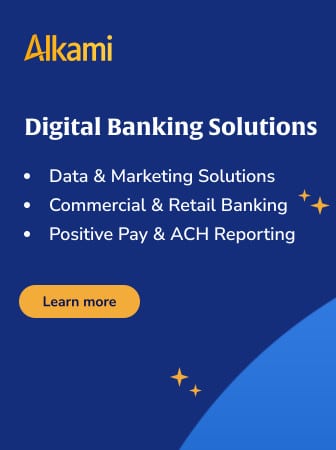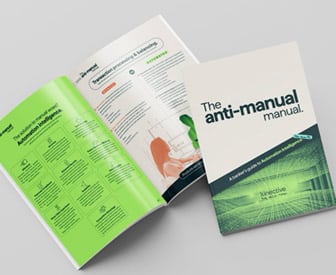No doubt, banks have a long way to go to becoming digital. Account applications, authentication, P2P payments, transaction receipts, et. al., are still too paper-intensive or still too cumbersome to do.
But “going digital” is no panacea.
Here’s the problem: New customer channels and technology infrastructures have emerged and evolved for the past 60 years. Going “digital” is no more revolutionary than when banks developed call centers, deployed ATMs, and offered “home” banking. In other words, going digital is inevitable and a cost of doing business — going digital provides absolutely no competitive advantage or differentiation.
The Dimensions of Value
What bank strategists should focus on is how to create and add value to customers in ways that other banks aren’t, won’t, or won’t be able to until well after their bank does.
Which begs the question: What exactly is “value”?
At the risk of oversimplifying the matter, the consumer research I’ve done over the years has convinced me that there are three value dimensions in banking:
- Customer intimacy. All jargon aside, this basically means that customers value doing business with someone that “knows” them. Given two banks offering identical products, some consumers will prefer the bank that demonstrates a better knowledge of who they are and what they want (even if that bank doesn’t deliver on that!). In the consumer research I’ve done, older consumers tend to place a greater level of importance on this type of value.
- Operational excellence. This isn’t “convenience.” Convenience is a cost of doing business, not a differentiator. Operational excellence is doing things right, and doing them efficiently. In a banking context, affluent consumers tend to value this more highly than other forms of value.
- Advice. What should I do? What’s right for me? Advice is a loaded term in banking, because advice is associated with investing, and has regulatory implications attached to it. But that doesn’t mean that consumers don’t need advice on how to manage their everyday financial lives. In the research I’ve done, younger consumers place a greater level of importance on this type of value than on intimacy or operational excellence. Makes sense, right? Younger consumers have less experience managing their financial life, so they need more advice.
Bank customers tend to place greater emphasis on one of the three dimensions than the other two, but that doesn’t mean they don’t want the other two. It’s simply a matter of what’s most important.
In addition, there is certainly a connection between the three dimensions: Providing effective advice requires some knowledge of the customer (intimacy), and must be provided in a timely matter (operational excellence).

Success Story — Driving Efficiency and Increasing Member Value
Discover how State Employees Credit Union maximized process efficiency, increased loan volumes, and enhanced member value by moving its indirect lending operations in-house with Origence.
Read More about Success Story — Driving Efficiency and Increasing Member Value

Join industry’s leading AI conference - free passes available!
Ai4 is coming to Las Vegas, August 12-14 2024. Join thousands of executives and technology innovators at the epicenter of the AI community.
Read More about Join industry’s leading AI conference - free passes available!
Financial Health is the Context for Providing Advice
The explosion of new Millennial (i.e., younger) bank customers means that advice is the more highly-valued value dimension today. But it’s also the value dimension that banks have not done the least well at delivering.
Here’s the problem: Too often, what banks try to pass off as advice is nothing more than marketing offers. In other words, the “advice” is what’s good for the bank, and not necessarily the customer. Even when advice is what’s best for the customer, it’s hard to prove it.
How do banks correct that? By linking advice to financial health.
The notion of financial health isn’t new. But, as Sarah Morgenstern of the Omidyar Network writes in a recent article titled Unfinished Business: Time to Invest in Americans’ Financial Health:
“Financial health is a messy problem rooted in a complex interplay between high fee and interest-based business models, legacy infrastructure, an antiquated regulatory landscape, and consumer behavior.”
What’s missing is a common measure of financial health.
With a common measure of financial health, recommendations (or advice) to “consolidate debt” or “set up recurring payments” can be made in the context of what impact actually doing those things would have on someone’s financial health.
Financial Health Measures
As they say, however, “if you can’t measure it, you can’t manage it.”
In the physical health world, there are more measures than one can shake a stick at. But in the financial health world, we have just one generally accepted metric–the FICO score–which measures credit worthiness.
Other organizations are working on alternative (or additional) scores. HelloWallet has developed a set of financial health scores which KeyBank has used to integrate into its online banking platform. And USAA has developed what it calls a Financial Readiness score.
But I’m most excited by what the Center for Financial Services Innovation (CFSI) is doing. In May, it published a white paper titled Eight Ways to Measure Financial Health based on its consumer research.
CFSI has also launched the Financial Health Beta Project, an initiative designed to help providers measure and improve their customers’ financial health. Through the end of the year, participating companies (which include Coastal FCU, EverFi, Guaranty Bank, and NetSpend) will use CFSI’s eight financial health indicators to measure and track their customers’ financial health.

Competing on Financial Health
The impact of measuring and managing financial health goes way beyond simply helping consumers (although I’m sure no one will complain if that’s the only impact it has).
A financial health measure–or set of measures–could change the basis of competition in banking. With a widely-accepted financial health score, banks and credit unions will compete not on who has the best rates and fees, but how well they have helped consumers improve their financial health.
In addition, measuring financial health is important to marketers because changes in a customer’s score are triggers for meaningful engagement (i.e., not just marketing offers).
It won’t appeal to everyone. Some older consumers may still value the intimacy of knowing someone in the branch, and affluent people may prefer the operational excellence of a particular provider.
But for many younger, emerging banking customers, getting advice to manage and improve their financial health will be the most important factor influencing who they do business with.
I could throw statistics at you to try to prove that point, but an anecdote may be more compelling. In a medium.com article titled The Bank of My Dreams, the author wrote:
“The bank of my dreams has a clear mission to help me achieve financial health. There are known paths to achieve financial well-being. My bank would have a point of view and design its products to nudge and lead me down a path. It would leverage everything it learns about me to market things that are good for me and remove options that will harm me. My bank’s KPI’s would be my rising credit score…”
The author alludes to the credit score because she probably isn’t aware of the efforts going to create additional scores.
If someone’s financial health score is truly meaningful to them, is it worth $5 or $10 month in order to get a 50-point improvement each year? The answer to that remains to be seen. But there is one thing you can bet on: Consumers will pay for things they perceive to get value from them.







